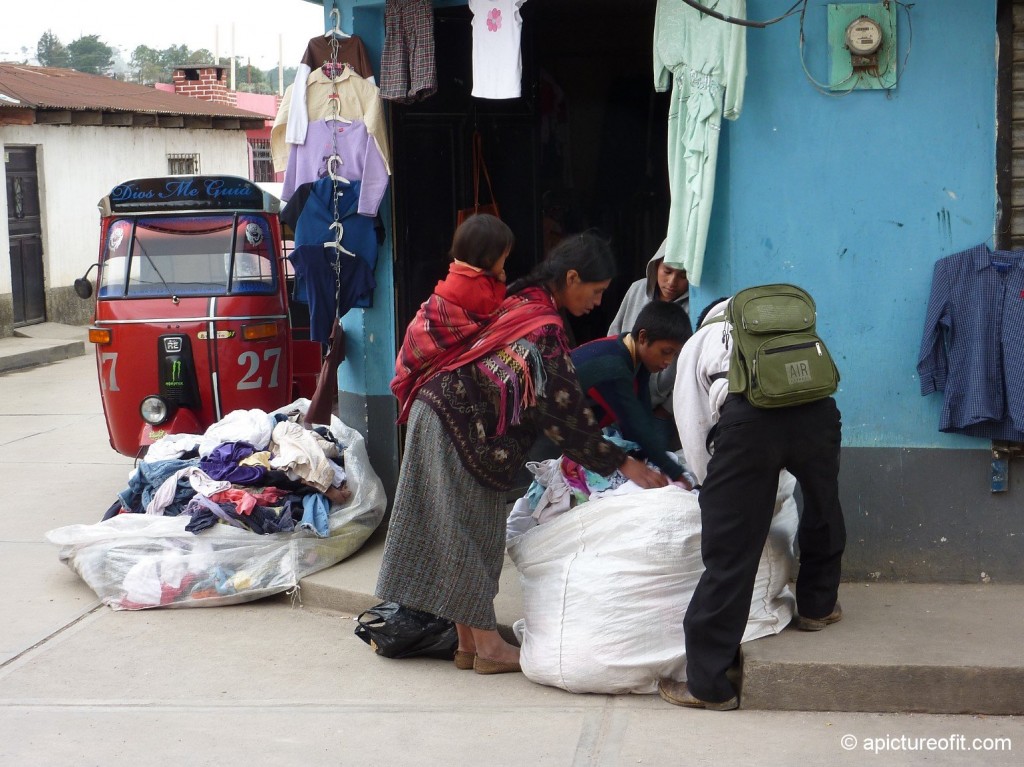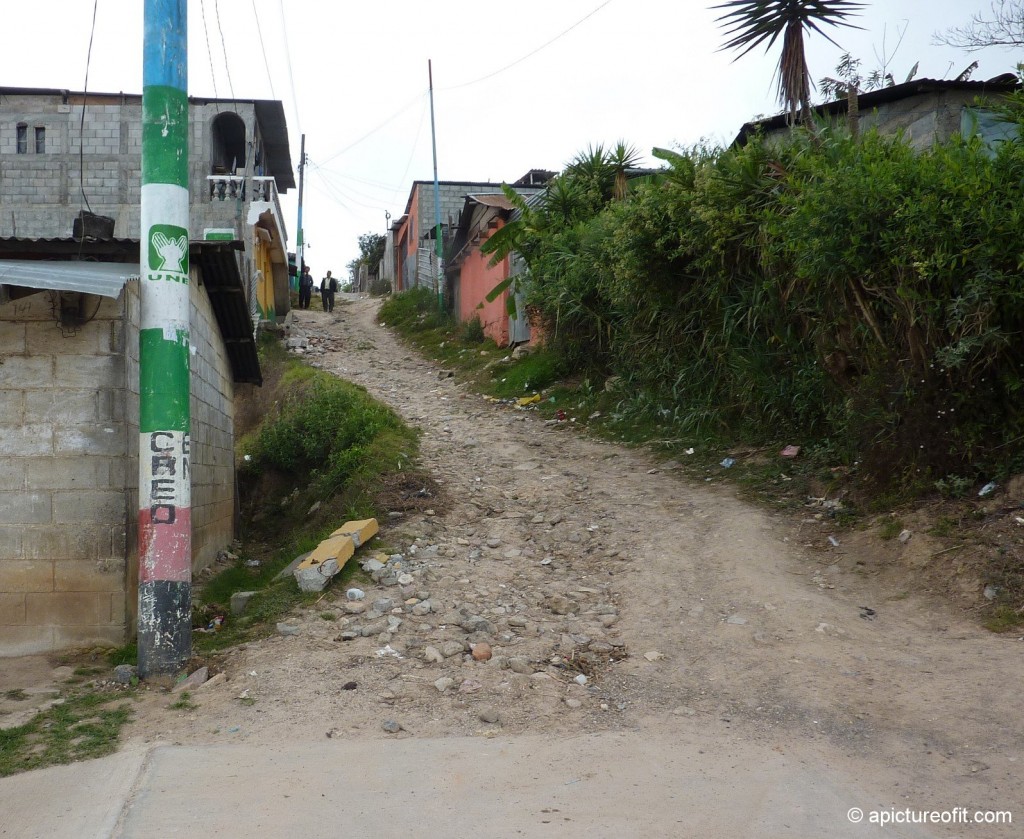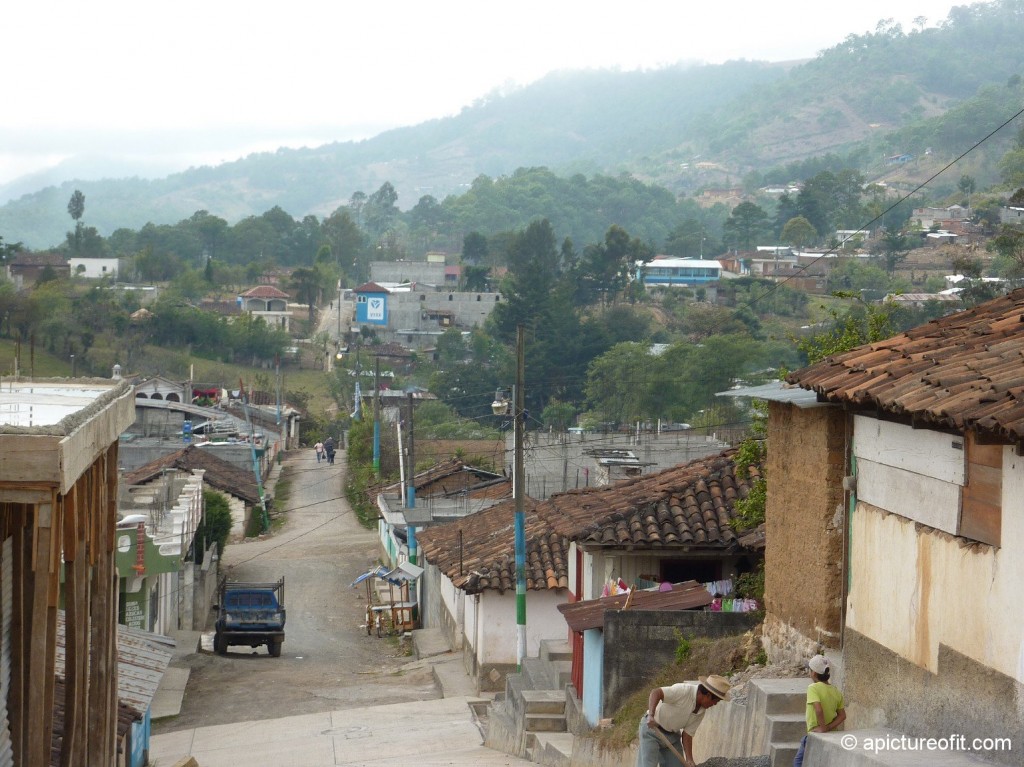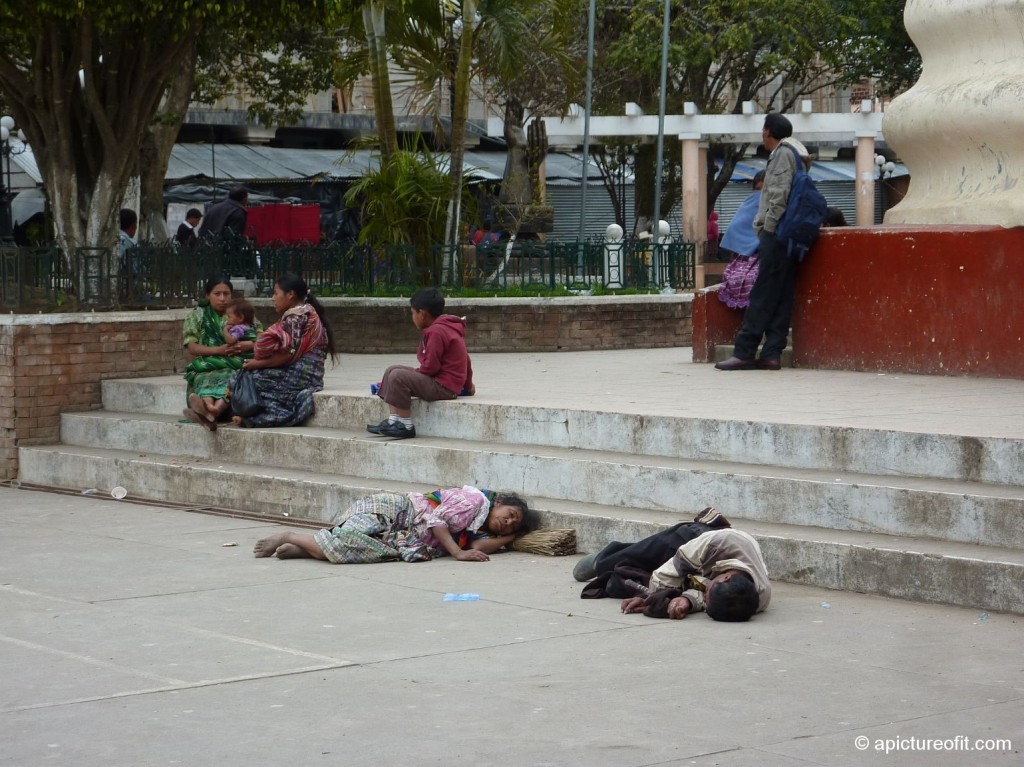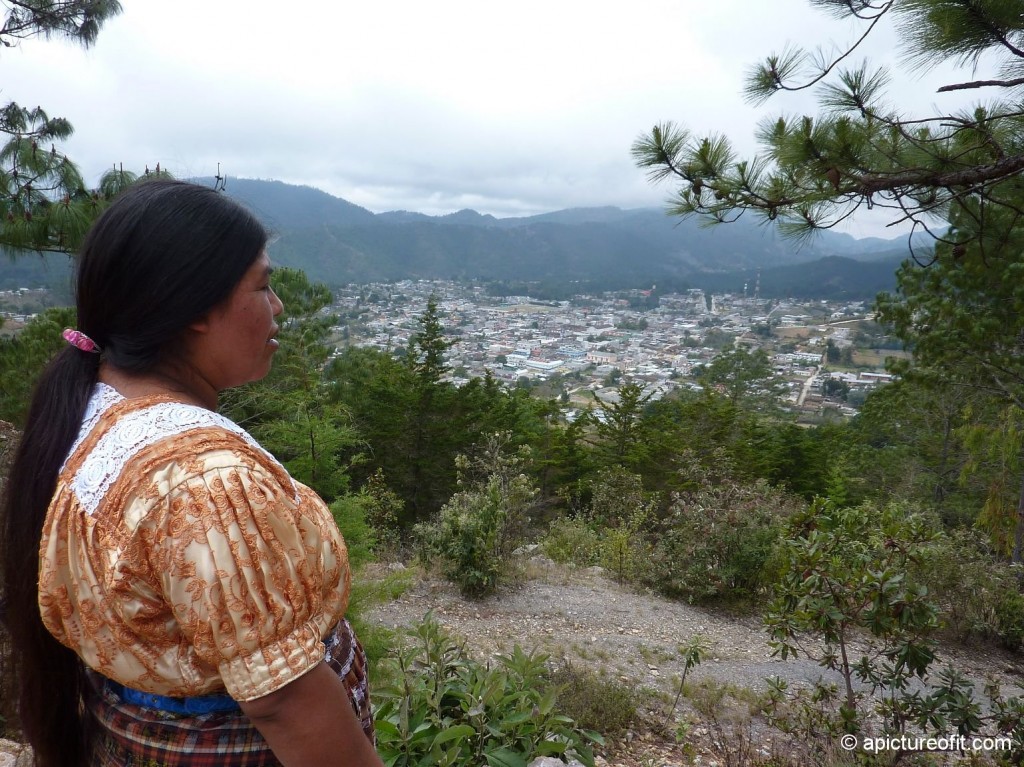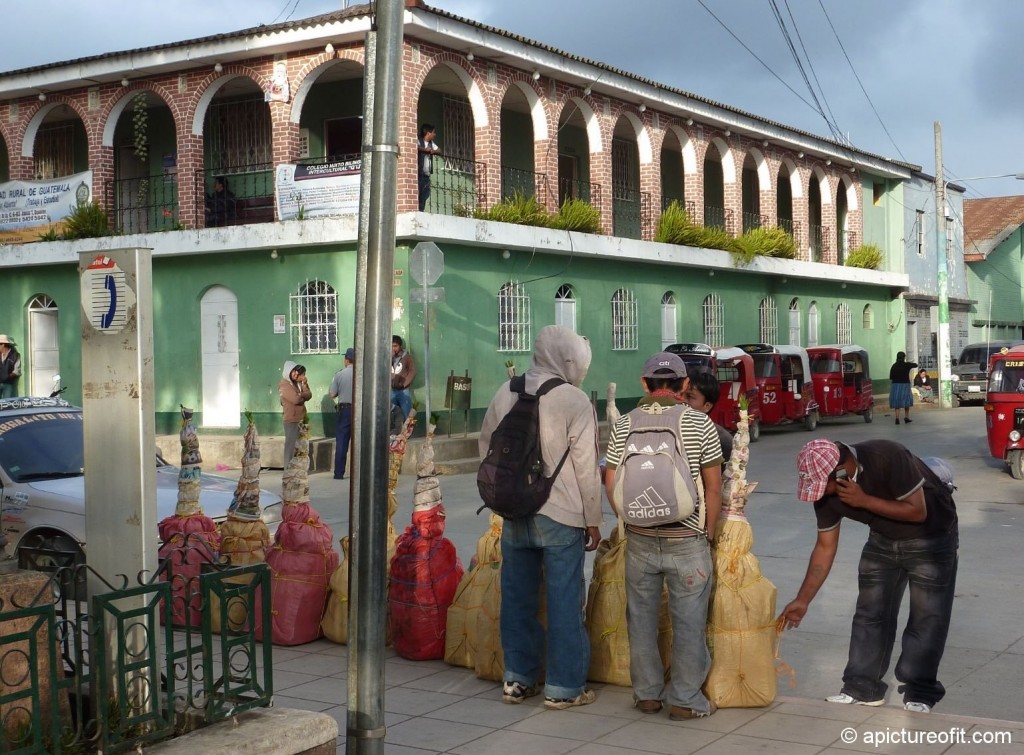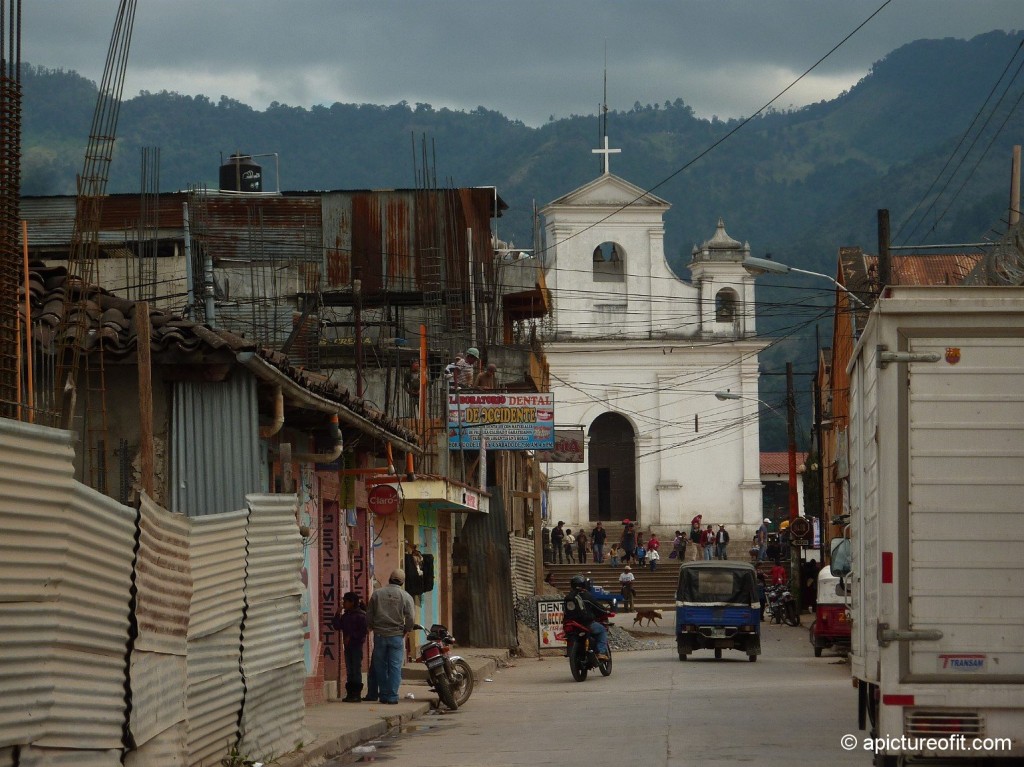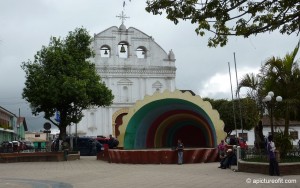 It is mid-afternoon. The whole day til now has been spent traveling and it is time to wander around this quite isolated village of 3500 where the only languages are Spanish and Q’eqchi Maya.
It is mid-afternoon. The whole day til now has been spent traveling and it is time to wander around this quite isolated village of 3500 where the only languages are Spanish and Q’eqchi Maya.
My two goals are to get a feel for the town and to cash a traveler’s check. One proves to be easier than the other. I have brought cheques de viajero, uneasy about bringing too much cash because of the rumors of the amount of street crime in Guatemala and preferring not to use a debit card because of the prevalence of card fraud. Cashing them in tourist areas has been slightly more complicated than cash but never a problem. Here it is different.
I find a bank willing to cash them, but not in recent memory (if ever) have they had to deal with this. What follows is an exchange of grace and patience between customer and server. She spends a half hour on the phone getting instructions from a larger branch. Altogether it takes an hour.
Now I walk the town, seeking out food. The market is varied and interesting.
Most everything one might need is available here – hardware, plastics, livestock tanks, toys, new clothing, are all available in some of the tiendas located outside the roofed market. Inside are many more options including grocery items and the characteristically colorful Guatemalan piñatas. One thing that I find to be quite different here is that groceries are always placed behind counters where one must ask for what one wants.
Throughout Guatemala, used American clothing is an inexpensive option, particularly when dressing children.
Produce is sold inside the main market
Local produce is also sold on the streets outside the market.
There is much evidence of the pervasive poverty of this region.
Two blocks away from the central plaza, some of the streets look extremely rough.
Other streets are in better condition.
There are other signs of poverty and desperation, sad to witness.
Apart from fried chicken and chirascos, finding food is a bit challenging.
I find only one fairly ‘normal’ looking restaurant. Lonely Planet lists a couple of choices; with a map purchased from the tourist office, I look for the two addresses. As mentioned in the previous segment, the Guatemalan street naming convention is really confusing, with four sets of almost identically named streets all emanating from the central plaza. After more trips around hunting for the named addresses, it is finally clear that at least one of the two restaurants listed no longer exists – I find a ramshackle building at what I am finally sure is the correct location with remnants of painted signs on the walls.
I happen across a woman and her daughter with a mobile cart selling tostadas topped with shredded chicken. I buy one and find it so perfect, I chase down the street to buy another. I have also purchased a couple of pieces of chicken – one from a street stand and one from a more formal tienda. No longer hungry now from my long travel day, I will deal with finding dinner later.
My hotel, though seemingly rough at first glance, turns out to be really comfortable. The hot water is nearly hot, there are plenty of blankets. The staff is wonderful, and locked gates make me feel completely safe at night. There is also a central cook shack which serves a great breakfast and dinner. It turns out that I need look no further for my evening meal.
This is the dish washing area of the cook shack. The family style tables are roofed over but open walled.
After a great night sleep, my original plan to head onward to Nebaj first thing in the morning is changing. I am feeling no urgency to leave here, no rush to move on to a larger town. I am not sure what more there is to do here but have til 1 pm before I must be checked out of my room. So out I go again camera in hand, walking quietly through and around the market. On one of these circuits, a woman with a textile stand initiates a conversation. We chat awhile and eventually she suggests that I might employ her as a guide. We chat a while longer, and I come to the conclusion that this is an arrangement that may work quite well.
Her name is Maria Cristina, she has three teenage children all of whom have dropped out of school. She has spoken both Spanish and Maya all her life (many women speak only Maya) and I find her very easy to understand and enjoy her company. We spend the rest of the day together with a break while she prepares lunch for her husband. Before lunch we stop in at her home then continue on to one of the sites I am wanting to see – the Maya ceremonial center on Cerro Xoqoneb where there is a great view of the village.
I meet her again at her tienda after lunch and she takes me to the cemetery. The light is perfect, and this cemetery turns out to be most interesting and colorful.
There will be many more views of this cemetery in the second segment on Guatemalan cemeteries.
Walking the streets with her works for us both. I am able to find the places that interest me most and attract much less attention than I might walking alone, though my quiet style seems to generally work well in any case. Our conversation is very interesting – I learn much about her life and she about mine. And at the end of the day I pay her. At the start we had left the price open, depending on what I felt was the value received. I pay her twice what she had asked for. It is a win-win, and a day we will both remember happily.
After one more comfortable night at Hotel Posada Doña Leonor, I pack up early and walk to the plaza to get transport onward to Nebaj.
Late the afternoon before, in the microbus area, there were young men heading south to the Thursday morning markets. They were bringing with them bundles of flowers from the local area to sell at other markets.
Now I am an early morning commuter, on the same route, to Santa Cruz del Quiché. I am dropped off an hour later 8 k before Sacapulas, at a crossroads. In barely ten minutes another microbus picks me up. The transporte publico is, as I had heard, very easy. After another hour the microbus arrives at the plaza in Nebaj.
Time to find accommodations in another new and strange town.



